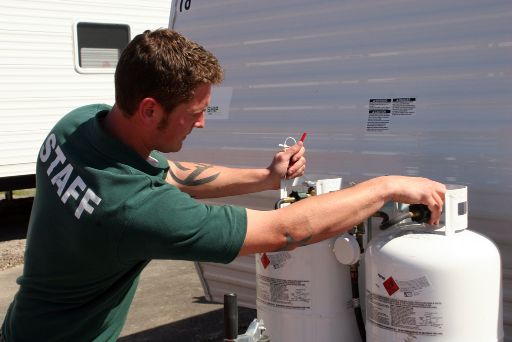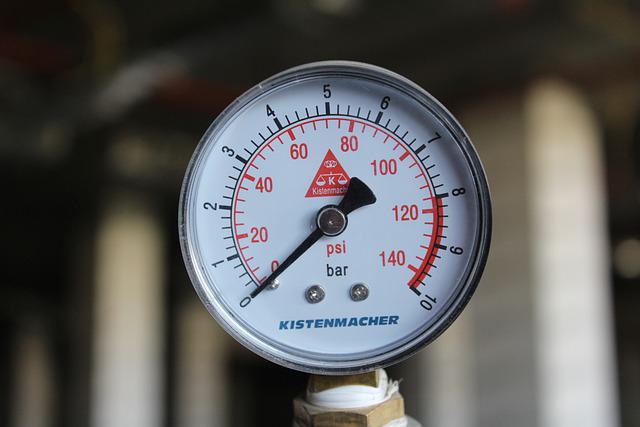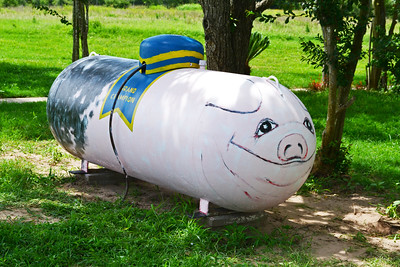
When it comes to transporting propane tanks in a car, you should never put a propane tank in the front or back seat. It’s important to follow safety guidelines and industry regulations to avoid accidents.
According to the National Fire Protection Association (NFPA) guidelines, propane tanks must be transported in a well-ventilated area, preferably in the trunk of the car, and should be securely fastened in an upright position. Propane tanks larger than 4.7 gallons (20 pounds) should not be transported inside a passenger vehicle due to the potential risk of gas leaks and explosions.
Always make sure the valve is tightly closed and the tank is not exposed to high temperatures, which can occur inside a car on a hot day. If you must transport a propane tank, use a pickup truck or a trailer where it can be safely secured and properly ventilated.
When transporting a propane tank, it’s crucial to follow safety guidelines to prevent accidents. Here are some key points to consider:
- Never place a propane tank in the front or back seat: Propane tanks should not be transported inside the passenger compartment of a vehicle due to the risk of gas leaks and explosions.
- Size matters: For tanks larger than 4.7 gallons (20 pounds), transportation inside a passenger vehicle is strongly discouraged. These larger tanks are more prone to leaking and can pose a significant danger if not handled correctly.
- Use the trunk or a well-ventilated area: If you have a smaller propane tank (up to 4.7 gallons or 20 pounds) and need to transport it by car, place it in the trunk. Ensure it is secured upright to prevent it from tipping over and causing damage or leaks.
- Temperature considerations: Propane tanks should not be exposed to temperatures above 120°F (49°C). Inside a car, temperatures can quickly rise, especially on a hot day, increasing the risk of a propane leak or explosion.
- Valve safety: Always make sure the valve on the propane tank is tightly closed and that the tank is free from damage before transport. This helps to ensure no propane can escape during the trip.
- Proper ventilation: When transporting a propane tank, it’s best to use a pickup truck or trailer where the tank can be safely secured and ventilated. Propane is heavier than air and can accumulate in enclosed spaces, posing a significant risk if there’s a leak.
Following these guidelines helps ensure that propane tanks are transported safely, reducing the risk of accidents and complying with industry regulations.
Safe Transportation Methods
When transporting propane tanks, it’s crucial to follow safety practices to avoid accidents. Here’s how you can do it safely:
Using the Trunk for Smaller Tanks
- Choose the Right Size: For small propane tanks (up to 4.7 gallons or 20 pounds), you can use the trunk of your car. These smaller tanks are easier to handle and fit better in a trunk.
- Secure the Tank Upright: Always transport the tank in an upright position. This helps prevent leaks and keeps the tank stable. You can use bungee cords or straps to keep it from tipping over during the drive.
- Keep the Valve Closed: Before you transport the tank, make sure the valve is tightly closed. This prevents propane gas from leaking out. Check the valve a couple of times to be sure it’s secure.
- Inspect for Damage: Before placing the tank in your car, look it over for any dents, rust, or other damage. A damaged tank is more likely to leak, which can be very dangerous.
Why It Matters
- Preventing Leaks: Transporting the tank upright helps ensure the gas stays inside and doesn’t leak out. Leaks can be harmful and potentially explosive.
- Stability: Securing the tank prevents it from moving around, which can cause damage to the tank or your car, and keeps you safe from any sudden shifts in weight while driving.
- Temperature Control: The trunk of your car is usually cooler than the inside of the cabin, which helps keep the tank at a safe temperature. Propane expands in heat, so keeping it cool reduces the risk of pressure buildup and leaks.
By following these simple steps, you can transport propane tanks safely and avoid accidents. Always prioritize safety and follow guidelines to ensure a smooth and safe trip.
Temperature Considerations
When transporting propane tanks, it’s important to be aware of the impact of temperature. Here’s what you need to know:
Impact of Temperature on Propane Tanks
- Propane Expansion: Propane expands when it gets hot. If a tank is exposed to high temperatures, the pressure inside increases, which can cause the safety valve to release gas to prevent the tank from bursting.
- Risk of Leaks and Explosions: High temperatures can lead to propane leaks. If the gas escapes in a confined space like a car, it can create a dangerous situation. Even a small spark, such as starting your car, could ignite the gas and cause an explosion.
Risks Associated with High Temperatures Inside a Car
- Rapid Temperature Rise: The inside of a car can heat up very quickly, especially in sunny or hot weather. Temperatures can easily exceed 120°F (49°C), creating a hazardous environment for a propane tank.
- Pressure Buildup: As the temperature rises, the pressure inside the propane tank increases. This can cause the safety valve to open and release gas, which might lead to a fire or explosion if there’s an ignition source nearby.
Safe Temperature Ranges for Transporting Propane
- Ideal Conditions: Propane tanks should be kept at a temperature below 120°F (49°C). This helps to maintain a safe pressure level inside the tank and prevent gas from escaping.
- Cooler Areas: When transporting a propane tank, place it in a cooler part of the vehicle, like the trunk, rather than the passenger cabin. The trunk generally remains cooler and helps keep the tank at a safer temperature.
- Avoid Direct Sunlight: Try to avoid leaving the propane tank in direct sunlight for extended periods. If you have to make stops during your trip, park in shaded areas whenever possible.
By understanding and managing the temperature considerations, you can ensure the safe transport of propane tanks. Keeping the tank cool and in a well-ventilated area reduces the risks associated with high temperatures, making your transportation safer.
Alternative Transportation Options
For larger propane tanks or when additional safety measures are needed, consider using a pickup truck or trailer. Here’s how to do it safely:
Using a Pickup Truck or Trailer
- Better Ventilation: Pickup trucks and trailers provide much better ventilation compared to a car’s cabin or trunk. This helps to disperse any gas that might leak, reducing the risk of dangerous gas accumulation.
- Handling Larger Tanks: For propane tanks larger than 4.7 gallons (20 pounds), using a pickup truck or trailer is recommended. These vehicles can handle the size and weight more effectively and safely.
Ensuring Proper Ventilation
- Open Air Flow: When using a pickup truck, place the tank in the truck bed where it is exposed to open air. This allows any leaking gas to dissipate quickly.
- Avoid Enclosed Spaces: Never place propane tanks in an enclosed space within the truck or trailer. Always use open or well-ventilated areas to prevent gas buildup.
Securing the Tank
- Upright Position: Just like in a car, make sure the propane tank is transported in an upright position. This minimizes the risk of leaks and ensures the tank remains stable.
- Strap It Down: Use straps, bungee cords, or other securing devices to keep the tank from moving during transport. This prevents it from tipping over or rolling around, which can damage the tank or cause leaks.
- Check Stability: Before starting your trip, double-check that the tank is secure and won’t shift or move. This is especially important for larger tanks, which can be heavy and potentially more dangerous if not properly secured.
By using a pickup truck or trailer and following these guidelines, you can transport larger propane tanks more safely. Proper ventilation and secure placement are key to minimizing risks and ensuring a safe journey.
The Best Place to Put a Propane Tank in the Car
When transporting a propane tank in your car, safety is the top priority. Here’s where and how to place the tank for the safest transport:
Use the Trunk
- Preferred Location: The trunk of your car is the best place to transport a propane tank. This area is usually more ventilated than the passenger cabin and provides a secure space to keep the tank upright and stable.
- Upright Position: Always place the propane tank in an upright position in the trunk. This helps prevent leaks and keeps the tank stable.
- Securing the Tank: Use bungee cords, straps, or other securing devices to keep the tank from tipping over or moving around during the drive. This is crucial to prevent damage and ensure safety.
Important Considerations
- Temperature Control: The trunk generally remains cooler than the inside of the car, which is important because propane tanks should not be exposed to high temperatures. Avoid transporting propane tanks in extreme heat to prevent pressure buildup inside the tank.
- Valve Safety: Ensure the tank’s valve is tightly closed before placing it in the trunk. Check the valve multiple times to make sure no gas can escape.
- Avoid Enclosed Spaces: Do not place the propane tank inside the passenger cabin, on the seats, or in any enclosed space within the car. This can lead to gas buildup and increase the risk of leaks or explosions.
By following these guidelines, you can safely transport a propane tank in your car’s trunk, minimizing risks and ensuring a safe journey.
How to Position a Propane Tank in the Car
Transporting a propane tank safely requires proper positioning and securing. Here’s a step-by-step guide:
1. Use the Trunk
- Location: The trunk is the safest place to transport a propane tank in a car.
2. Keep the Tank Upright
- Position: Always place the propane tank in an upright position. This ensures that the pressure relief valve operates correctly and minimizes the risk of leaks.
3. Secure the Tank
- Stability: Use straps, bungee cords, or other securing devices to keep the tank from tipping over or rolling around during transport.
- Check for Movement: Make sure the tank is firmly in place and doesn’t move when you push it gently.
4. Valve Safety
- Close the Valve: Before placing the tank in the trunk, ensure the valve is tightly closed to prevent gas leaks.
- Double-Check: Confirm the valve is fully closed and there are no signs of damage to the tank.
5. Avoid Heat Exposure
- Shade: If possible, park the car in shaded areas to keep the trunk cool.
- Ventilation: Ensure there’s some airflow in the trunk to prevent heat buildup. Propane tanks should not be exposed to temperatures above 120°F (49°C).
6. Inspect the Tank
- Check for Damage: Before transport, inspect the tank for any dents, rust, or other signs of damage. A damaged tank is more likely to leak.
Step-by-Step Summary
- Place the propane tank in the trunk of your car.
- Ensure the tank is upright to minimize the risk of leaks.
- Secure the tank with straps or bungee cords to prevent it from moving.
- Close the valve tightly and double-check for any signs of damage.
- Keep the trunk cool and ensure proper ventilation.
To Make a Conclusion
Transporting a propane tank in the front or back seat of your car is not recommended due to the significant safety risks involved. Placing a propane tank in the passenger cabin can lead to dangerous gas leaks, potential explosions, and exposure to high temperatures, all of which can have serious consequences.
For safe transport, always use the trunk of your car for smaller tanks, ensuring they are upright and securely fastened. For larger tanks, consider using a pickup truck or trailer to ensure proper ventilation and stability. By following these guidelines and adhering to industry regulations, you can minimize risks and ensure the safe transport of propane tanks.

Mike is an experienced propane technician with over 15 years of professional experience in the field. He has dedicated his career to helping customers with their propane needs, from installation to maintenance and repair. Together with Jeremy, he co-founded this website to provide useful information and guidance to customers seeking reliable propane services.



